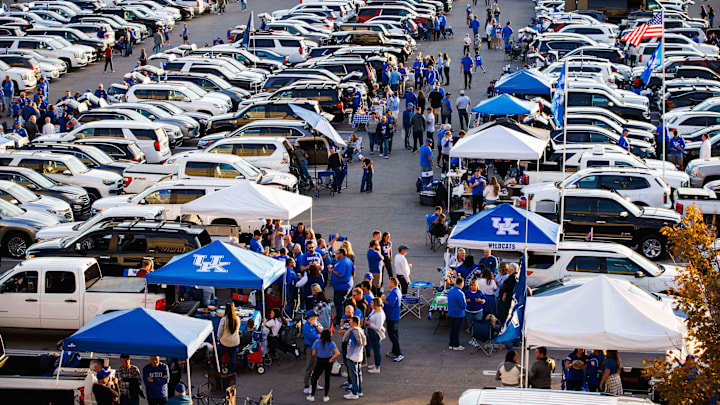Kentucky's BBN on the precipice of a new era in college sports
A crisp fall day in Lexington. Cornhole bags thud against wooden boards in the Kroger Field parking lot. Laughter carries in the cool air. Someone’s playing John Anderson from a truck bed. Strangers become friends because they wear the same shade of blue sipping from red solo cups.
This is what college sports were meant to be.
College sports has many problems to solve like the NIL but leaders want to mess with the one gold situation the @MarchMadnessMBB . Yes spend time fixing the problems with the NIL & transfer portal which have created CHAOS ! via @ESPN App https://t.co/TbcdfHpy05
— Dick Vitale (@DickieV) August 1, 2025
Not contracts. Not Transfer Portals. Not subscription fees to get closer to the team you already love.
There was once a purity to college athletics. A Sunday afternoon in March wasn’t about contracts or new NIL opportunities—it was about Selection Sunday watch parties. It was the ache in your stomach when your team’s bubble burst, or the explosion of joy when your name popped up on the bracket. It was about campus pride, alumni devotion, and that unspoken bond between generations of fans.
Now? It’s harder to recognize.
With NIL collectives and coaches calling for fans to "pony up," and players treating the portal like a revolving door, the soul of college sports is on the line. Not gone completely—but eroding fast.
“texas tech is ruining college sports”
— 🦅 future dogtor felipe 🦅 (@felipe4prez) June 14, 2025
“texas tech needs to be investigated what they’re doing should be illegal”
“what texas tech is doing in NIL is wrong”
meanwhile: pic.twitter.com/71RuLFkON1
The House v. NCAA settlement cracked the dam wide open. Schools will soon pay athletes directly, essentially legalizing revenue sharing in the Power 5. On its own, that might be progress. But pair it with unrestricted transfers and a pay-to-play arms race, and the result isn’t college sports—it’s something closer to minor league professional ball.
Programs are rebuilt yearly, not developed. Jerseys don’t stay hung in lockers—they’re reused like name tags at a networking event. Even the idea of the four-year student-athlete at one school is slipping into nostalgia. Rylan Griffen will be playing for Texas A&M basketball this fall, his third school in 4 years. Zach Calzada will be on his 4th team in 7 years at Kentucky.
Some welcome this. Others—administrators like Mitch Barnhart, coaches like Tara VanDerveer, fans across every conference—are sounding the alarm. Because what made college sports special wasn’t just the talent. It was the tradition, the continuity, the sense of community.
And while the athletes deserve everything they’ve earned, the pay-for-play that NIL has become has changed the game forever. And while some champion this change in how things are done, the rest of us are left wondering:
When did we lose the game we fell in love with? Will it ever come back?
